We can’t get enough of the fun and colourful pop art that Mexican photographer and graphic designer Paul Fuentes creates. In this post we share some of our favourite pastel-coloured animal-filled pieces of art…
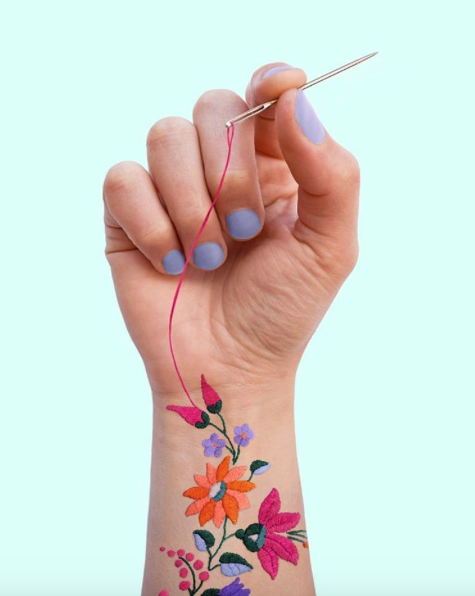
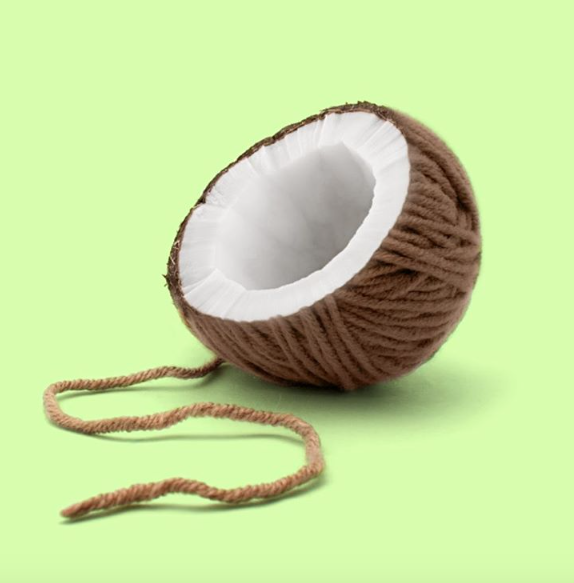
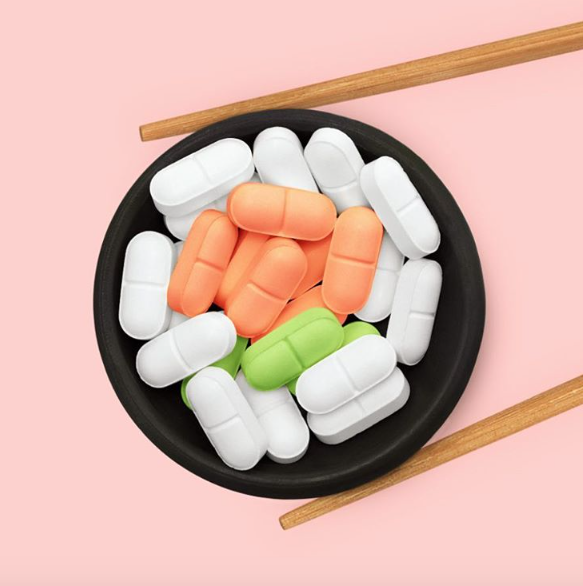
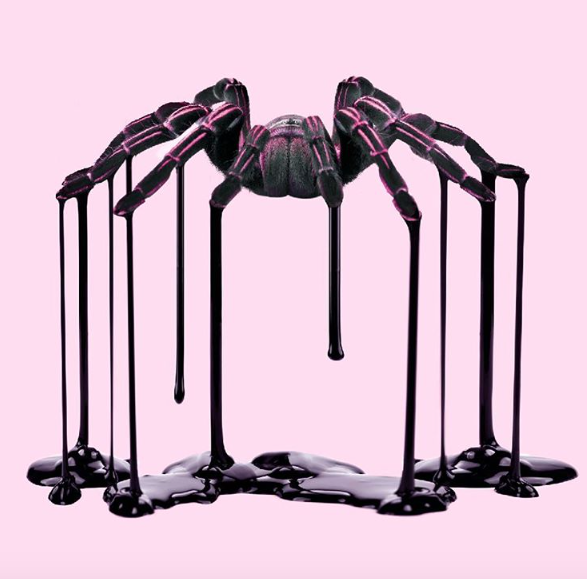
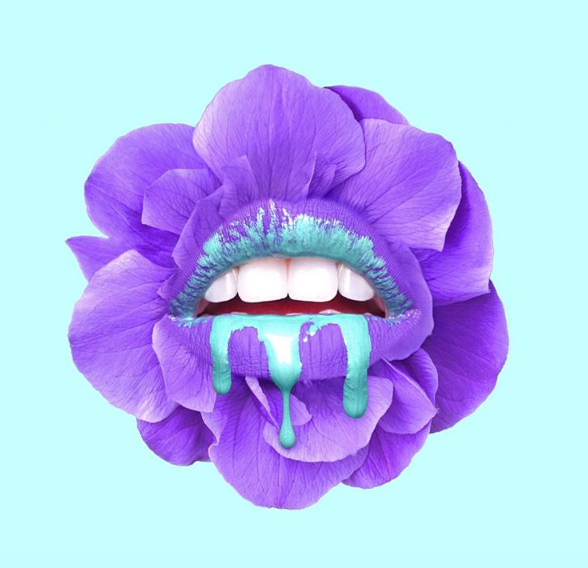
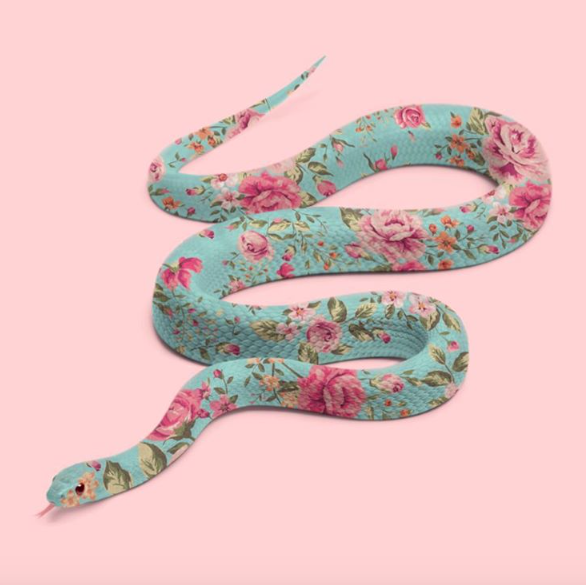
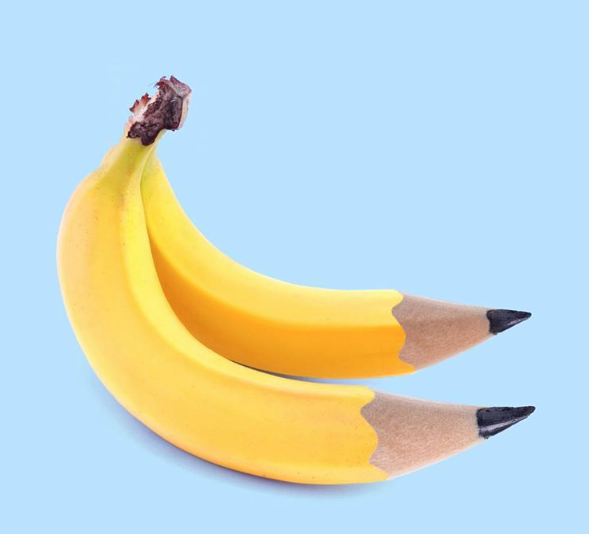
Stories we wear on our skin
We can’t get enough of the fun and colourful pop art that Mexican photographer and graphic designer Paul Fuentes creates. In this post we share some of our favourite pastel-coloured animal-filled pieces of art…







Clean lines, not too many details. Paul Colli, resident at Satatttvision in Milan, likes to call his tattoos “ugly and ignorant”. In this interview, our Italian contributor Ilaria Pauletti explains why and discusses his humble view on current tattoo society, more about Horitomo references and his Monmon cats…
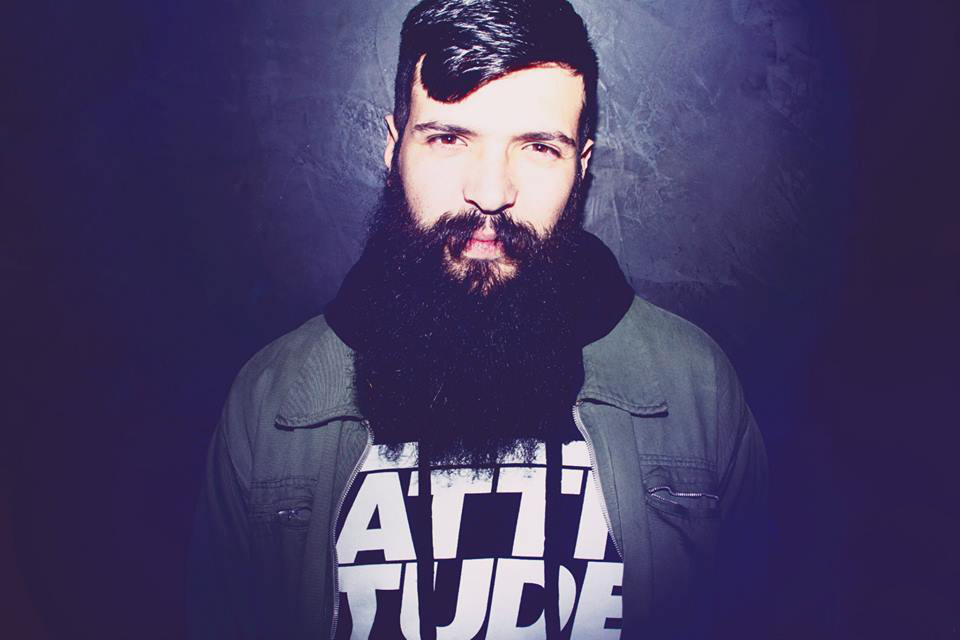
What brought you into tattoo culture? How did you start tattooing? I walked into the tattoo world when I was 16, with total ignorance. I got the initials of my mum and my sister tattooed, I thought it was cool as I was the only guy to have one in my class. A few months later, I went for the second and then goodbye, I was overwhelmed by the enthusiasm and I started getting tattooed all the time!
At 18, I bought my first “machine” and the first power supply at the Milan Tattoo Convention and I began to work on pork rind. Unfortunately some friends came in to get scribbled, but after a few months I stopped. I didn’t get tattooed for a couple of years until I met Max and Marta the owners of studio Vigevano. I spent everyday there, I had become a cumbersome presence and when I was asked if I was interested in learning how to clean, sterilise and live the apprentice life, I accepted. I began to draw more frequently, tracing Hoffmann, Sailor Jerry, Dietzel, tons of flash badly implemented on paper.
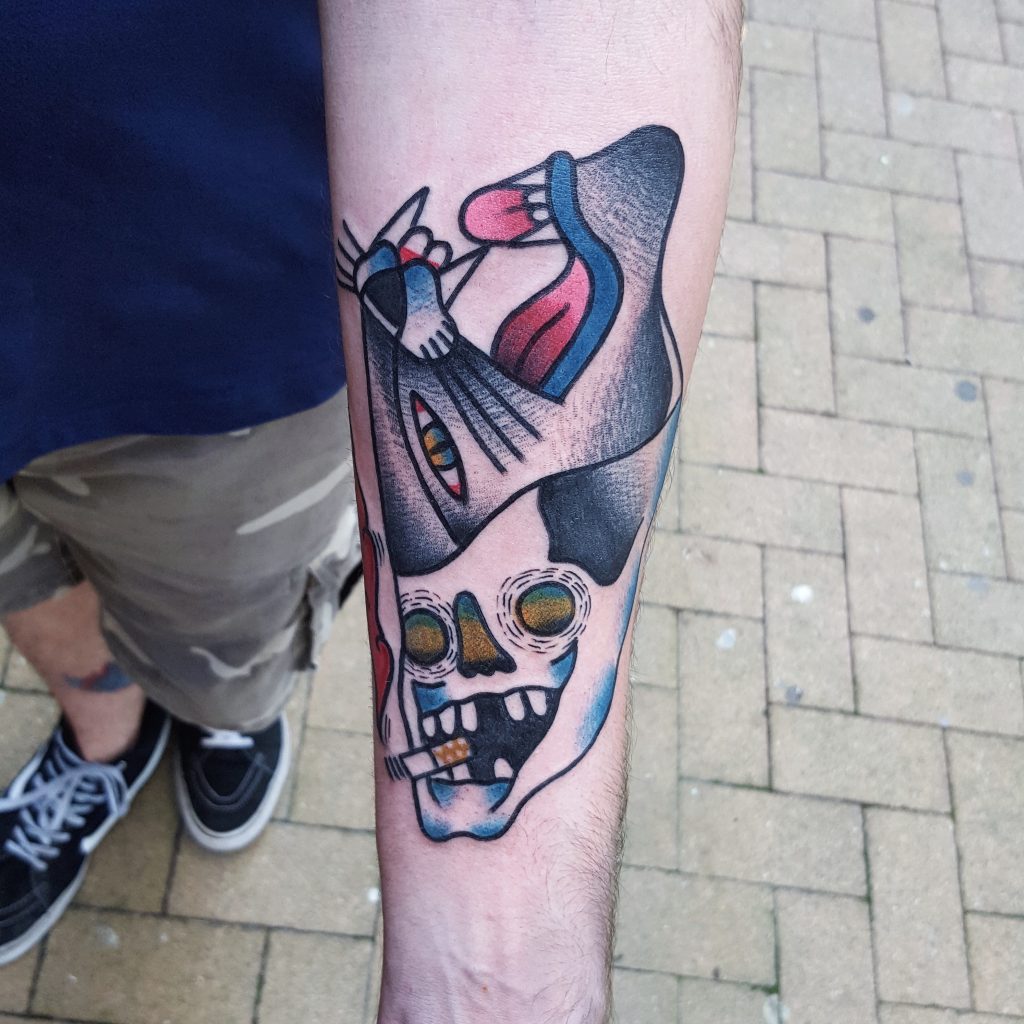
You often say your tattoos are “ugly and ignorant” tattoos, how would you define this style? I’ve always loved simple tattoo designs. The less details there are the better. “Ugly and Ignorant” is a deliberately extreme definition of my work, linked to the clarity of a subject realised in an elementary way – a few lines that are immediately readable. Lately I’ve been putting a little more detail in my tattoos, but I prefer to use thicker lines that keep the process of simplifying the original flash, leaving many empty spaces where I can “scratch”.
Your cats are a traditional version of those recreated by Horitomo? Who/what inspires you? Yes, without a doubt! The first cat I made was at “Sailor Whisper” in Ravenna, the girl wanted the classic curled Monmon Cat. I remember having developed it until it became a skull! Since then I have studied and played with the cats of Horitomo, but also with various photographic references, changing the thickness of the lines and inserting traditional subjects pattern.
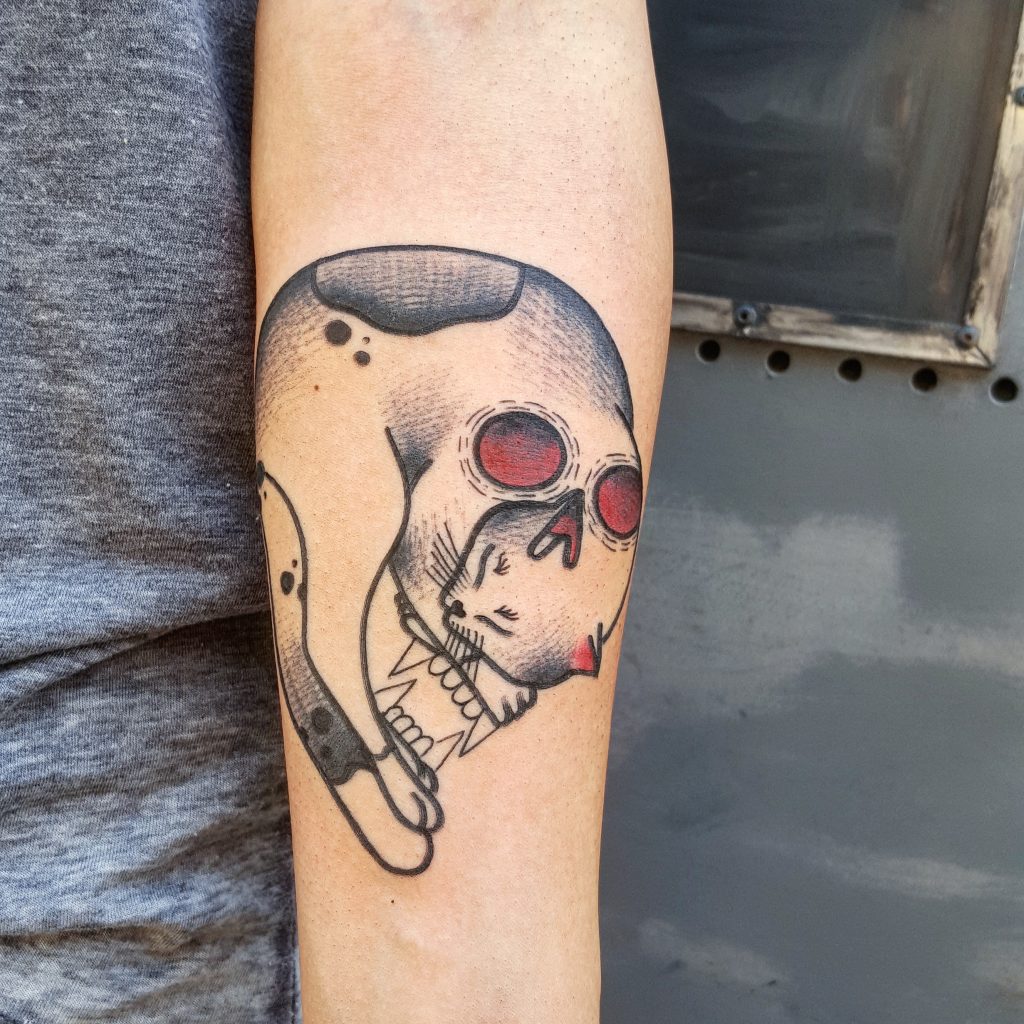
What subjects do you prefer? Are there any projects you would like to start? In the past year I have concentrated on Eastern tattoo art, with the use of geishas, samurai and masks. I like to keep the classic traits of Japanese art but simplify it. The results look good, but I think I still have a lot to study and improve.
What are your points of reference in the world of tattooing? I have always studied traditional tattoos, and been inspired by the flash of tattoo artists who have shaped the history of this craft. Every artist I know is helping me to grow and to understand something different. Everything can be considered a good reference point when the exchange takes place in a constructive way.
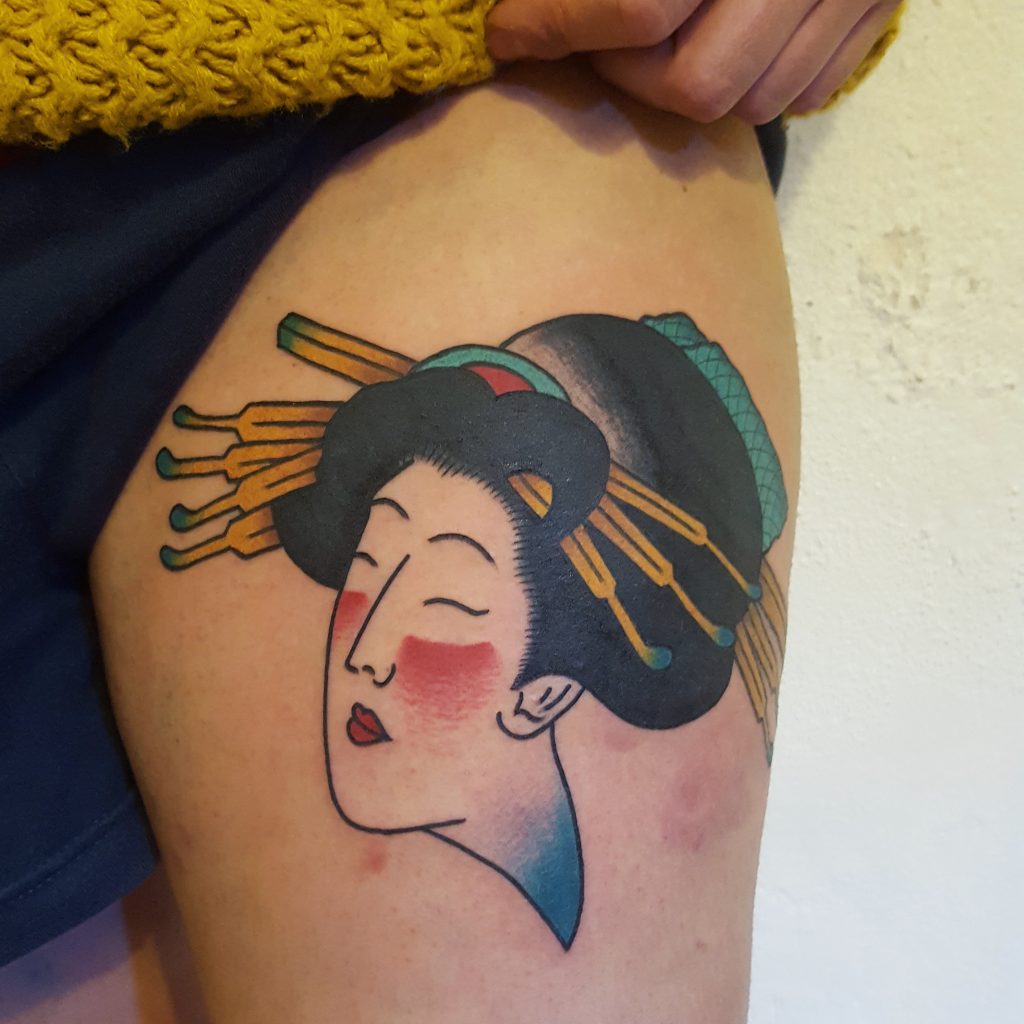
How do you think the future of this art will develop? On one side there are castes in the Italian tattoo scene that in my opinion should have never been created, and these contributed to make it definitely a worse world – success is not necessarily synonymous with talent. On the opposite side, however, exist and continue to come to light great artists who contribute every day to make the tattoo world a crazy and magnetic place. So really, I have not the faintest idea what will happen in the future!
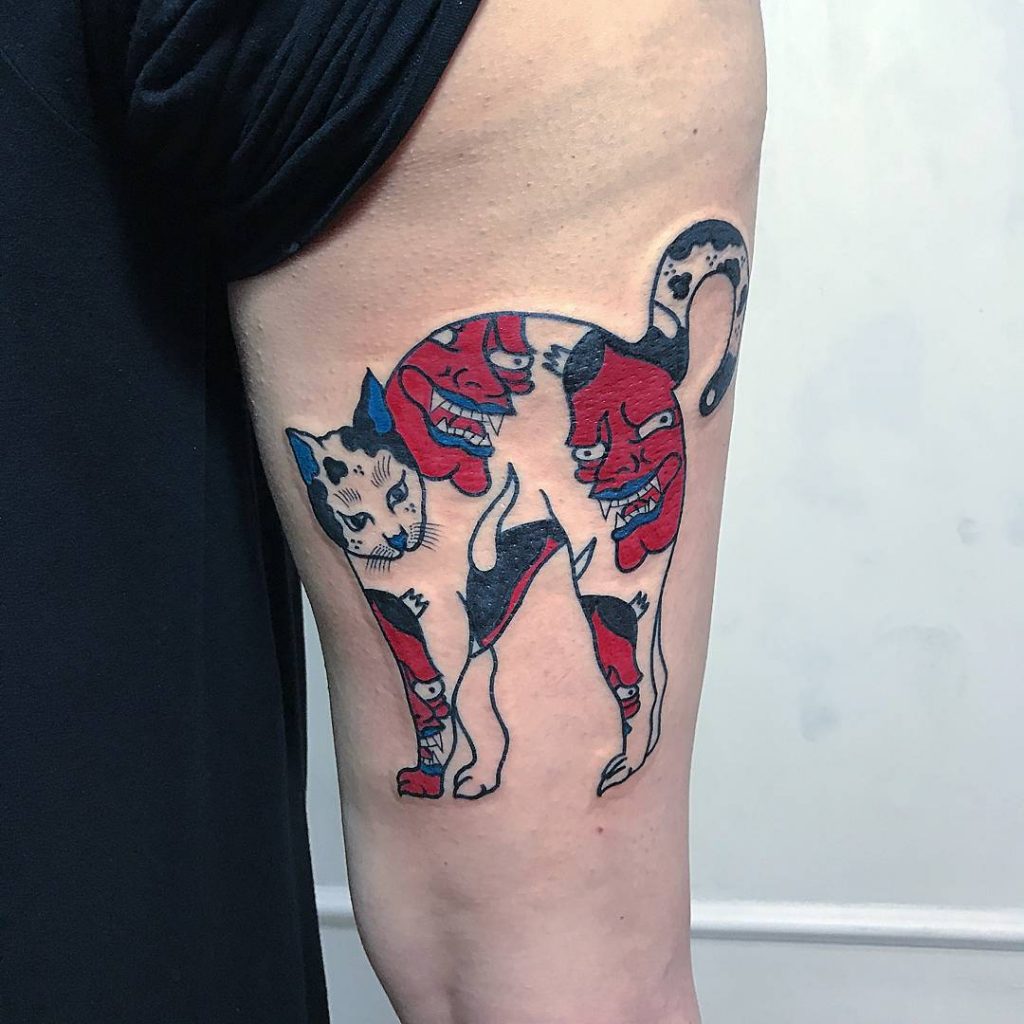
Some say that the tattoos are ‘not for everyone’, what do you think? Tattoos are for everyone. Now the market supply has exploded and this allows everyone to have the means to start tattooing, not necessarily having the qualities suited to undertake this type of work. Who now begins considering himself as an artist, often ignores history and is not interested in traditional iconography and has a very low personal culture. I think it’s fair to adapt to developments in a constructive way, to experiment, evolve, but always maintaining respect for the tradition. And above all, stay humble. If you think you made it, you will not be able to go on. There is always more to achieve.
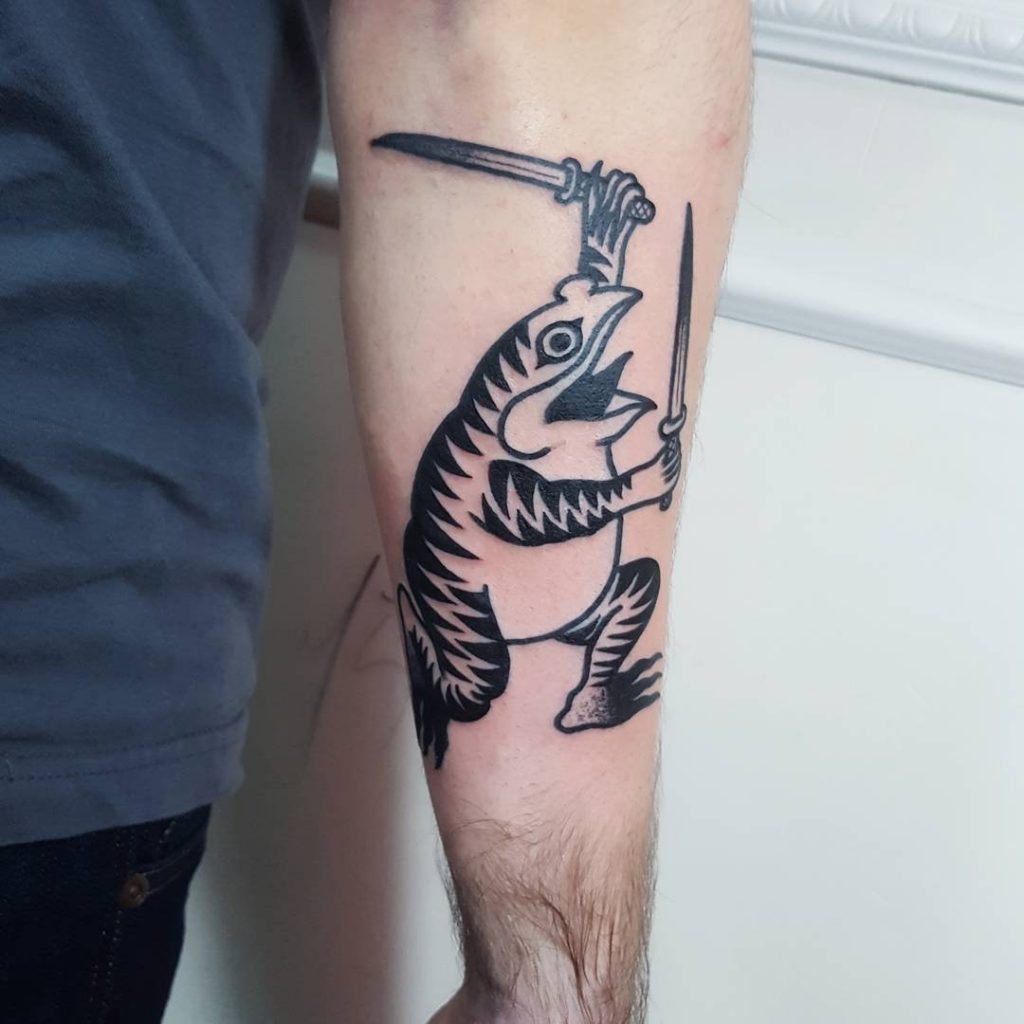
The role of the tattooist in current society, is it artist or craftsman? The question is all the rage in recent years! As I mentioned before, I think it’s a balance between craft and art. As I do not believe that a tattoo artist sees the tattoo only as an art work. Basically I think that technological developments have influenced the way tattoo artists act, work and so they’re a mix between a craftsman and an artist. Certainly it is always satisfying when a customer chooses you among a thousand others because of your personal style.

Do you have any upcoming guest spots and projects in the works? I am now a resident artist at Satatttvision Collective in Milan. I will be working at Sang Bleu in Zurich at the end of February, April I’ll be at Area Industriale in Rome, Sailor Whisper in Ravenna and Maux Les Bleus in Paris. June I’ll be working at Modificazioni Corporee in Chiavari, and finally in November I will be at the Brussels Tattoo Convention.
Chinese raised New York based artist and designer Tina Yu creates incrediblely colourful and detailed sculptures. Here we share a few of our favourites…

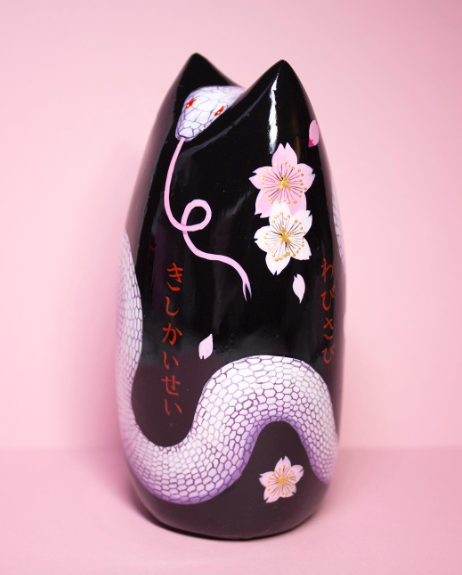
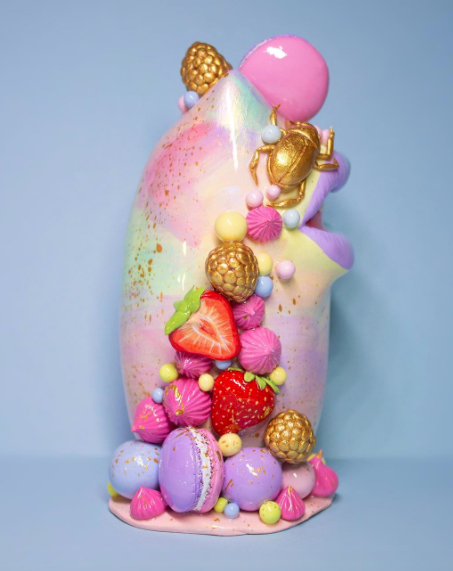
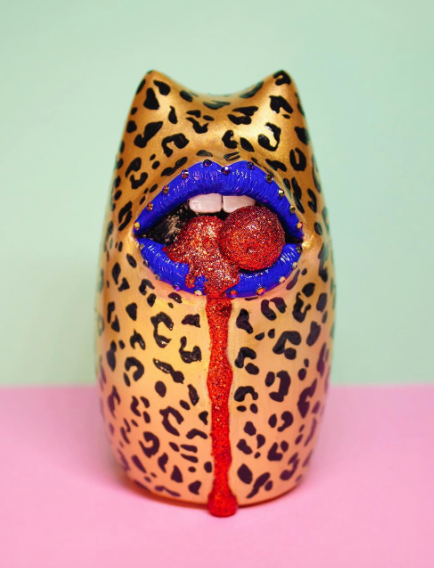
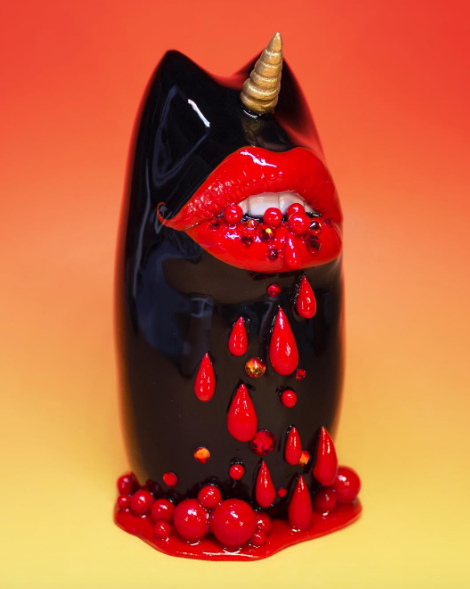
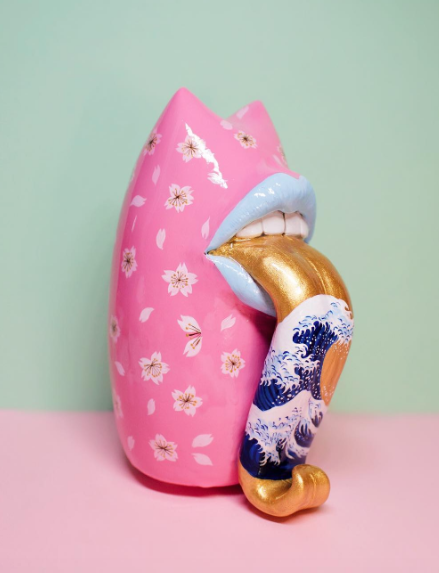
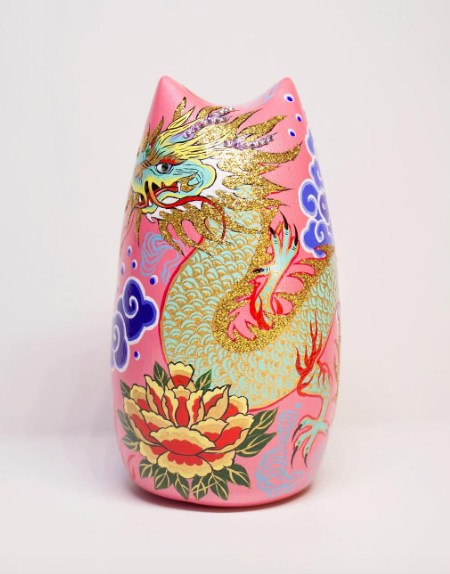
Here, 25-year-old embroidery artist and warehouse production worker Jessica So Ren Tang, from San Francisco, tells us all about her beautiful hand-stitched pieces and the inspiration behind them…
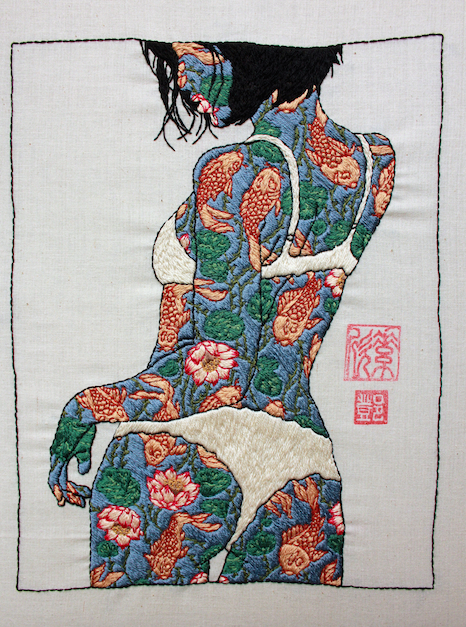
“As a child I knew I wanted a career in the arts. Throughout school I learned and experimented with various mediums, I started embroidering and playing with fabric and thread in my senior year of college in preparation for my senior exhibition. I graduated with a BA in Studio Art at Mills College in Oakland, CA.”
“I had semester-long assignment which involved playing with different materials and. for one of the experiments. I made a cup noodle container. I quickly found that styrofoam was a poor sewing material, so I began to replicate a cup noodle container with fabric instead. I enjoyed the softness and texture of embroidery in my sculpture pieces and I continued looking for other objects to replicate. I was more interested in sculpture but disliked the bulk clay and similar mediums had.

“I continued to embroider because I loved the flexibility it gave me, as well as its rich history of being women’s work. In the future I want to explore more fibre art and sculpture and keep pushing my skills in fabric and thread.
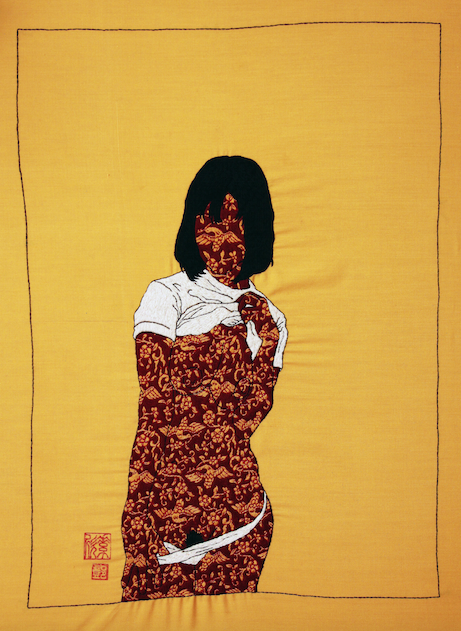
“I draw inspiration from memories of my childhood and my experiences of being an Asian American woman. For my object series, I look for items that I have bought or used that have Asian/American significance and use. Specifically, I look for Asian snacks and containers that I have used or seen in my childhood. Replicating objects in fibre is my way of exploring my Asian American identity – it is a way for me to replicate the duality of being too Chinese to be American and too western to be really Chinese.
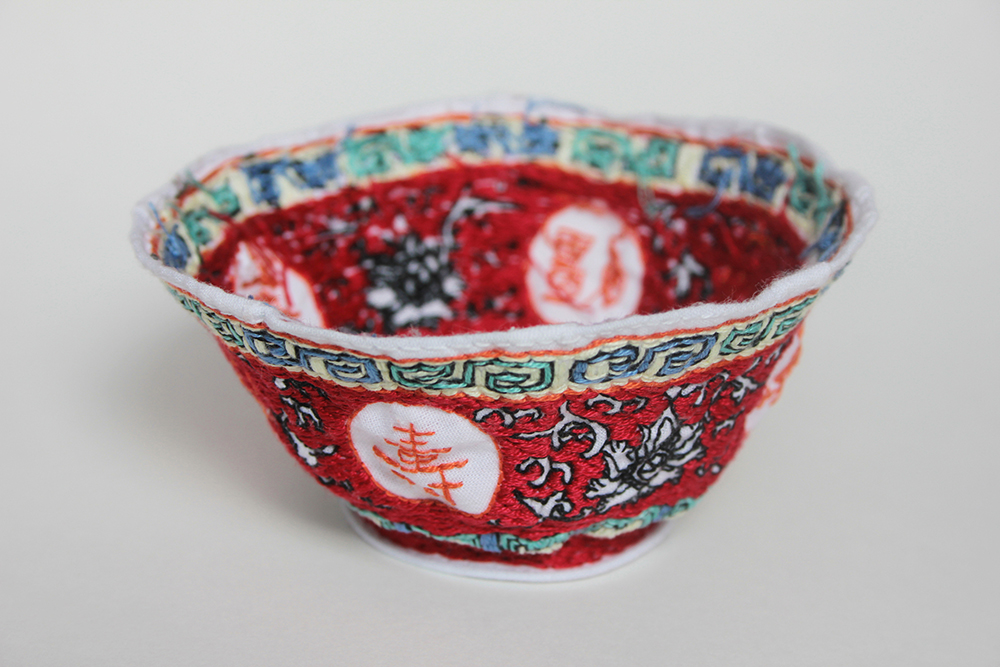
“Initially, it was not my intention for my pieces to have connections with tattoo art. Replacing the skin of suggestively posed Asian women was intended to obscure the girl’s identity, in an attempt to address this Asian American dual identity experience. the girls’ facial markers are removed but replaced with an Asian pattern, still retaining an Asian identity but non-specific to her ethnicity. But the style of pattern on the girl has specific origins to an Asian culture. I look for a variety of Asian patterns but so far they are mainly of Japanese and Chinese origins. Although I am looking to expand to different Asian patterns in my future pieces.
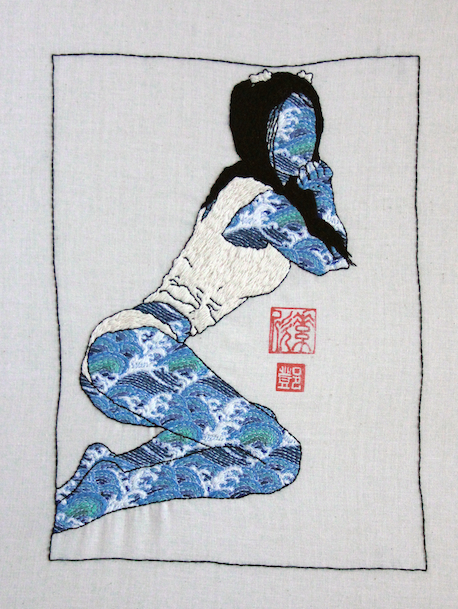
“My girl series was inspired by Ikenaga Yasunari’s paintings of women and textile patterned clothing. The female forms help to emphasise the feminine medium that is embroidery, but it is also a familiar image that I express myself through. I create a little piece of myself through each girl, in the hopes of creating a tangible object that encompasses my Asian American experiences.
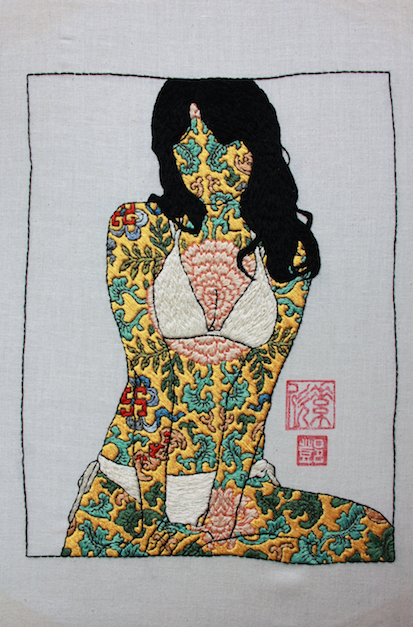
“The colours in the patterns help to highlight a figure but to pull back and flatten – sort of like a silent wallflower girl. The facelessness of the women is to suggest a general Asian identity without pinpointing a specific nationality. Extending the pattern to the entire body was more aesthetically cohesive and balanced. Having the pattern on just the face drew too much attention to the head when I wanted the entire figure to be emphasised.
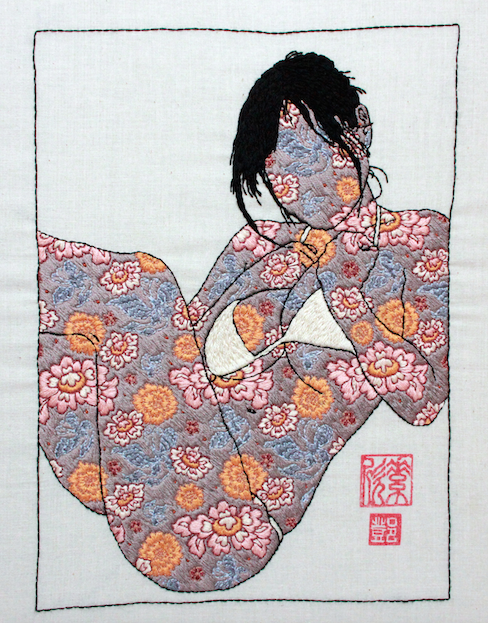
“My object series, depending on the size and complexity, range from a week to a little over a month to be finished. Each mini girl takes about 50 hours of stitching and 100 hours for the larger girl pieces, as everything is stitched by hand.
“My works are currently not for sale for a variety of reasons. I still have a small body of work due to how long it takes me to complete one piece and exhibiting would be difficult if I started selling, I’m still attached to my pieces and I’m hard pressed to let them go, and I don’t have much free time outside of my day job and selling would take me away from working on my art. Of course, many of these reasons will eventually be solved and I do plan on selling my work.”
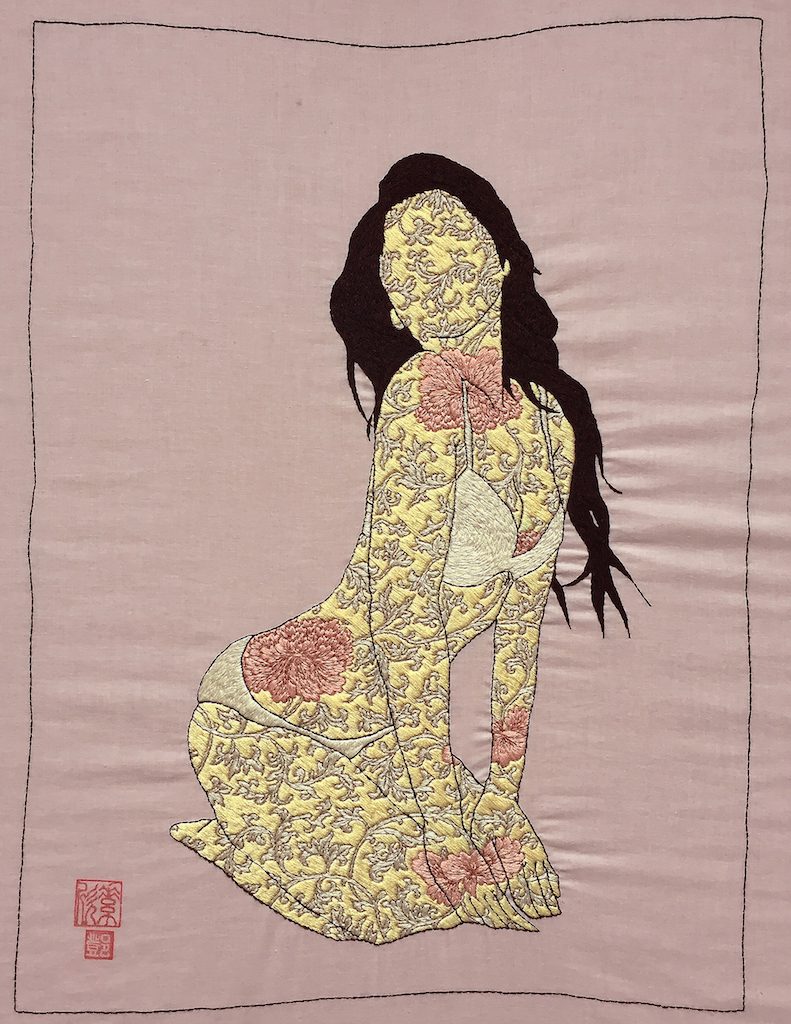
View more of Jessica’s work on Instagram: @jessicasorentang
We chat to 24-year-old Ruth Finn Leiser (aka Roobs), writer, feminist and founder of GRLCLB about starting her own business, creating a zine and her tattoo collection…
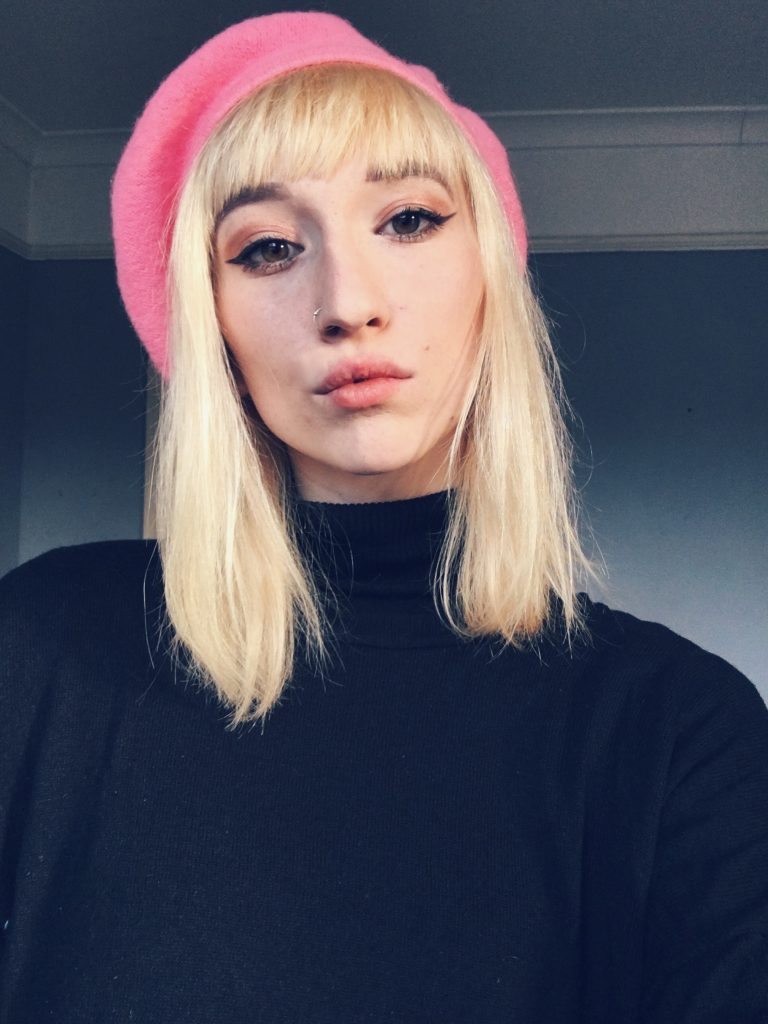
What inspired you to start GRLCLB? How did it come about? How did it start? GRLCLB is the product of frustration, neglected creativity, and a horrible job. I was working full time, often up to 60 hours a week, running a gift shop – for a boss who wanted me to give my all for just £7 an hour and to whom nothing was ever good enough.
I spent so long looking for that one thing that would save me, the outlet that I needed, and eventually I realised that the reason I couldn’t find it was because I needed to create it. I had stitched a couple of t-shirts – the reaction from my Instagram followers was really positive and I just sort of thought ‘well what have I got to lose?’ I bought the domain name for under a tenner and set up this rookie website with no clue what I was doing, and just took it from there.
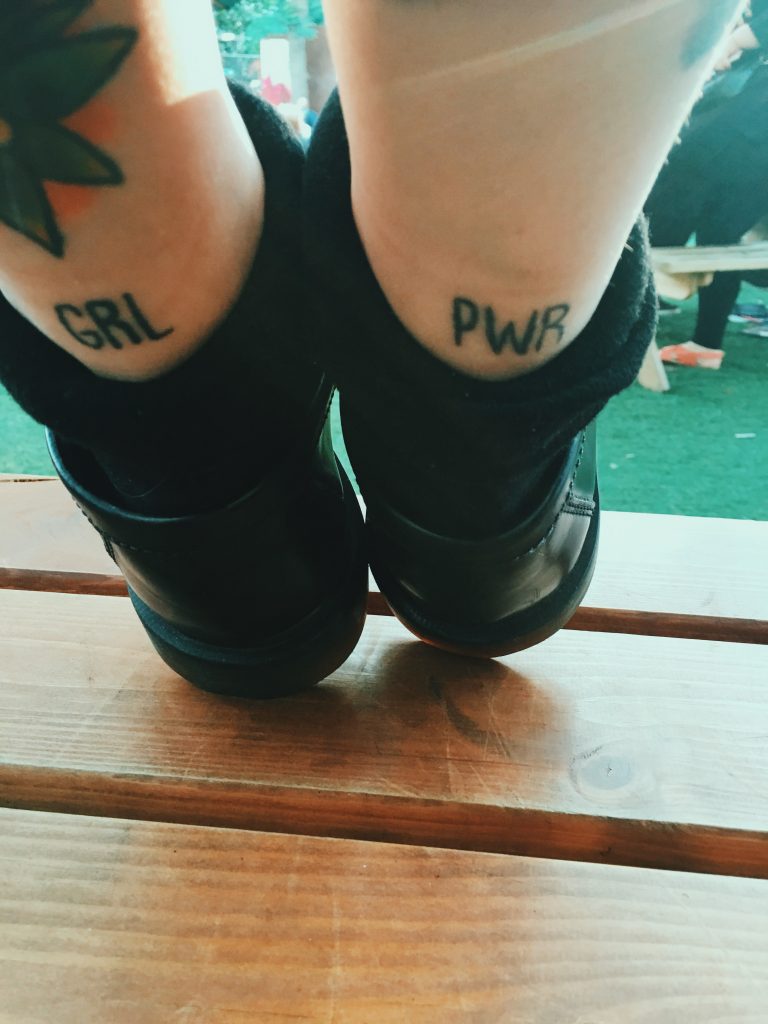
What message are you hoping to spread or share? Really, I just want to be honest. It’s so easy to shy away from speaking your mind when the internet can be such a brutally unforgiving place. But when you realise that by simply speaking your mind, you can be providing comfort for other people who are thinking the same things as you or feeling the same way as you, it becomes a) less scary and b) more important. In a world where you can create an entire existence – persona, success, lifestyle – out of square pictures on a social media app, it is, I think, genuinely necessary that people are shown what’s real from time to time.
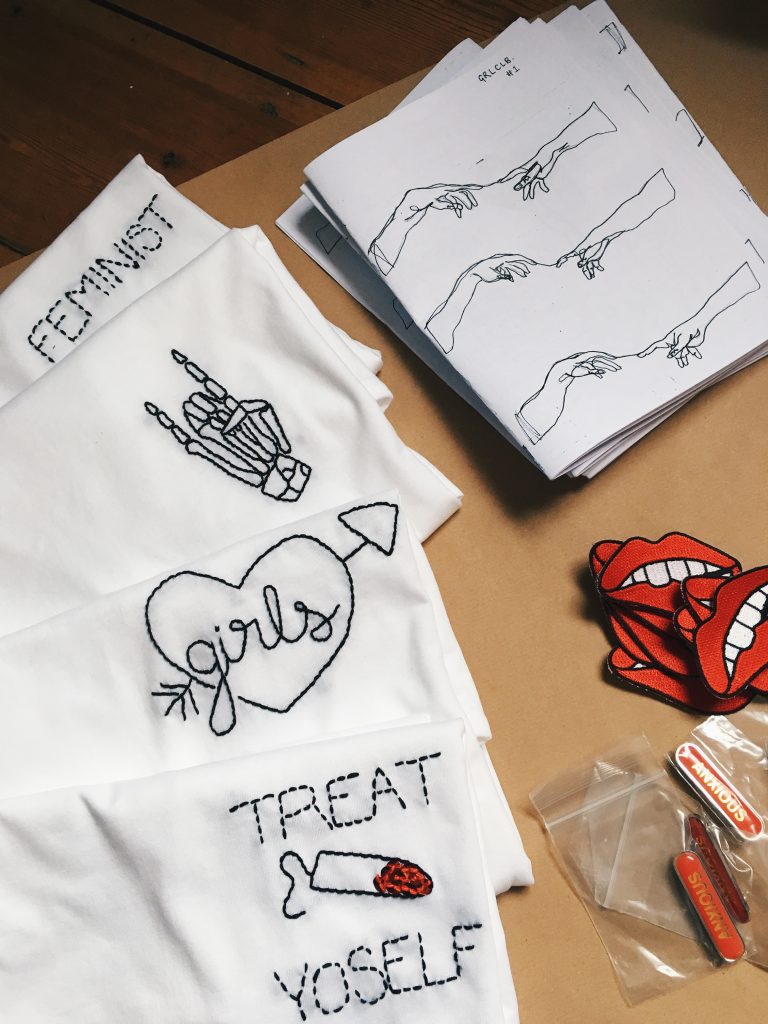
What can people expect to see and read on your blog? Well that’s where I start to feel like ‘blog’ doesn’t really apply. To me, blogs are like really well-oiled machines that rely on organisation and planning and structure and conforming to a particular kind of aesthetic/content for a specific intended audience. The writing side of GRLCLB is, honestly, completely shambolic. I’ve never really been able to write for purpose, I’ve always just gone with the flow and refused to ever force anything. So the Girl Talk section of the website is littered with unscheduled outpourings talking about stuff ranging from body positivity to domestic abuse to the neurochemistry of introversion to what’s happening with the business side of GRLCLB to why I’ll never promote skinny tea.
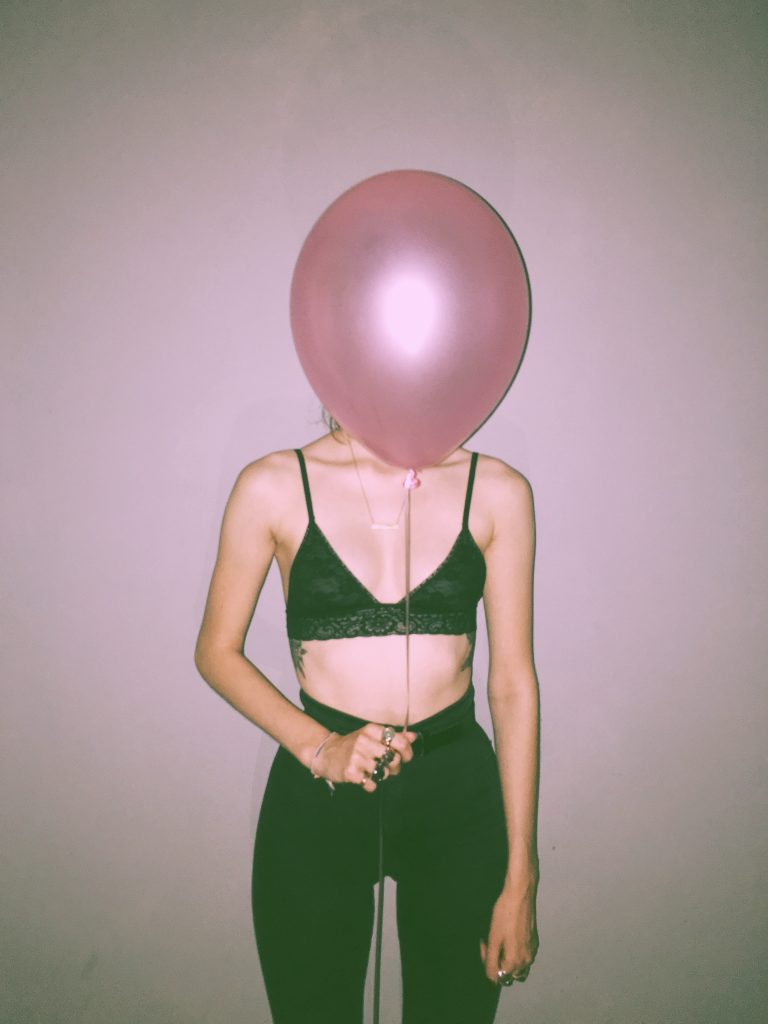
Can you tell us about your new zine, what’s inside? The zine has been a highlight for me. Even though it was a little bit rushed to get it out in time for Christmas, it provided a really nice new level to the whole GRLCLB experience I think. I loved the thought of people settling down to read it on paper rather than a screen. The first issue had poetry, tips for challenging anxiety, a self-care guide, a recipe, doodles, a list of facts that make the world seem nicer etc.
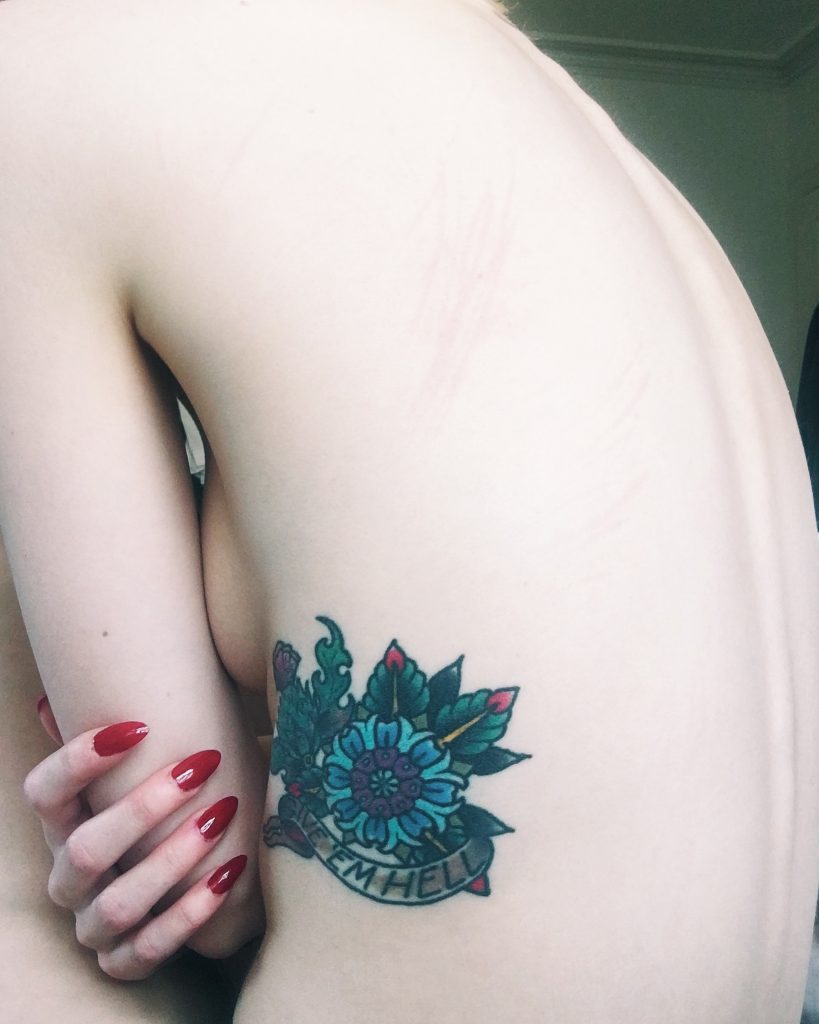
How can people get involved? That’s something that I really want to focus on in 2017! From the outset, I wanted GRLCLB to be like a community, and I’m constantly trying to find ways for people to contribute. I’m excited for the next issue of the zine because the potential for exciting collaborations is endless. I just can’t think of anything nicer than a converging of girl power from the internet into real life.
Do you have a background in art? From a recreational point of view, I was such a manically creative child, but from an academic perspective, not at all. University also killed my creativity. I studied psychology. It was only when I graduated that I realised I’d forgotten how to be anything other than analytical. I spent a lot of time pointlessly wondering whether, if I’d pursued art way back when like I’d wanted to, I’d have ended up somewhere else. But, actually, part of me thinks that art school could’ve been even more damaging. The thought of creating something, only to have a quantifiable grade assigned to it is totally soul-destroying to me.
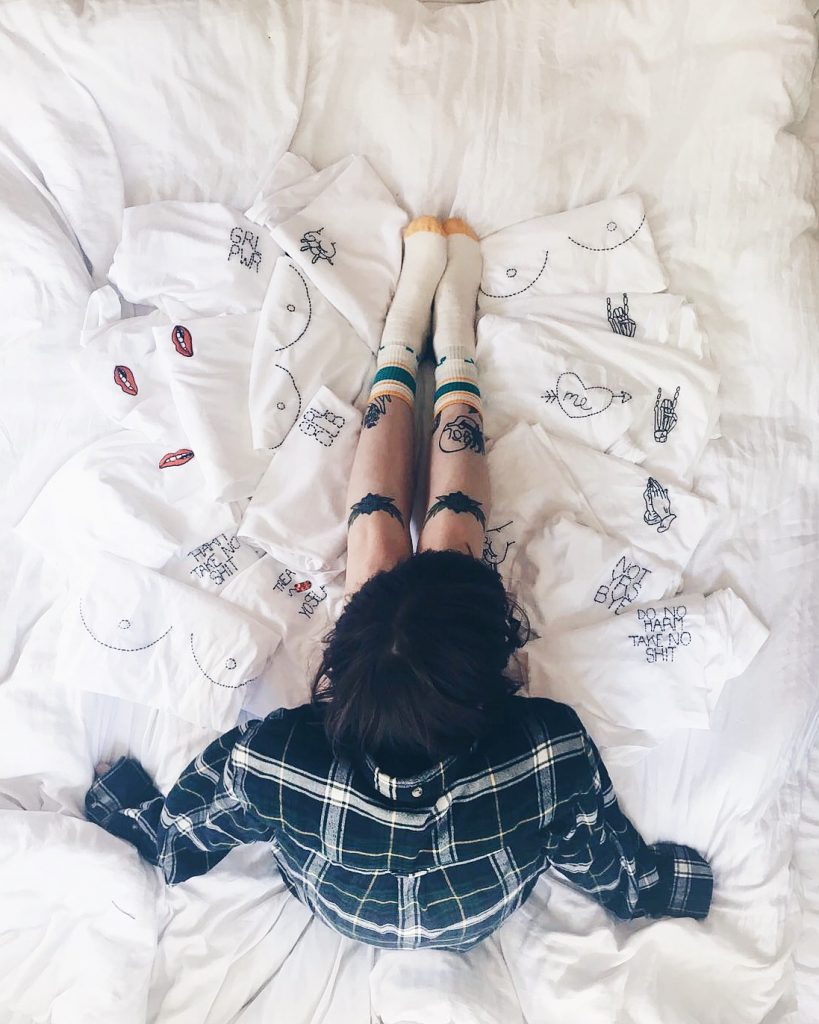
What inspires your creations? I truly believe that we’re a product of everything we experience. Everything we create is a product of all the people we’ve known and the music we’ve heard and the stories we’re told and the sights we’ve seen. My mum introduced me to a lot of great music – Bruce Springsteen and Crosby, Stills & Nash, and Led Zeppelin etc – and my dad is just totally eccentric – anything weird or unusual or surprising that I like is definitely down to him. I think I draw equally from their generation and mine.
The more political side of GRLCLB is, I guess, just inspired by what’s going on in the world around me. The only difference between other people and me is that where someone else vents through Twitter or their friends, I’m like ‘this is going on a t-shirt’.

When did you get your first tattoo? What was it? Do you still love it? My first tattoo was a couple of years ago. I was late to the game because I’m so indecisive that I was convinced I’d get something on a whim and then end up hating it. So, obviously, I got an ode to Shakespeare. It’s based on a couple of lines from The Merry Wives of Windsor: ‘Why then, the world’s mine oyster, Which I with sword will open’. The first bit has obviously filtered into general usage, but it’s the second bit that always appealed to me – the world might be mine for the taking but I actually have to do something about it. Darryl from Irezumi tattoo studio in Glasgow drew me up a hand with a dagger and an open oyster shell, and I’m as obsessed with it today as I was the day I got it.
Can you tell us about your other tattoos? Some have meaning, some don’t. I have a thistle and a cornflower (the flowers of Scotland and Germany respectively) and a banner saying ‘Give Em Hell’ in tribute to my ancestors and the struggles they faced – also by Darryl at Irezumi. Mel at Black Dot gave me some of my favourites: a badass woman’s torso, a pair of hands sewing out the words ‘Girl Boss’ to remind me to keep at it, and the simplest GRL PWR across my Achilles.
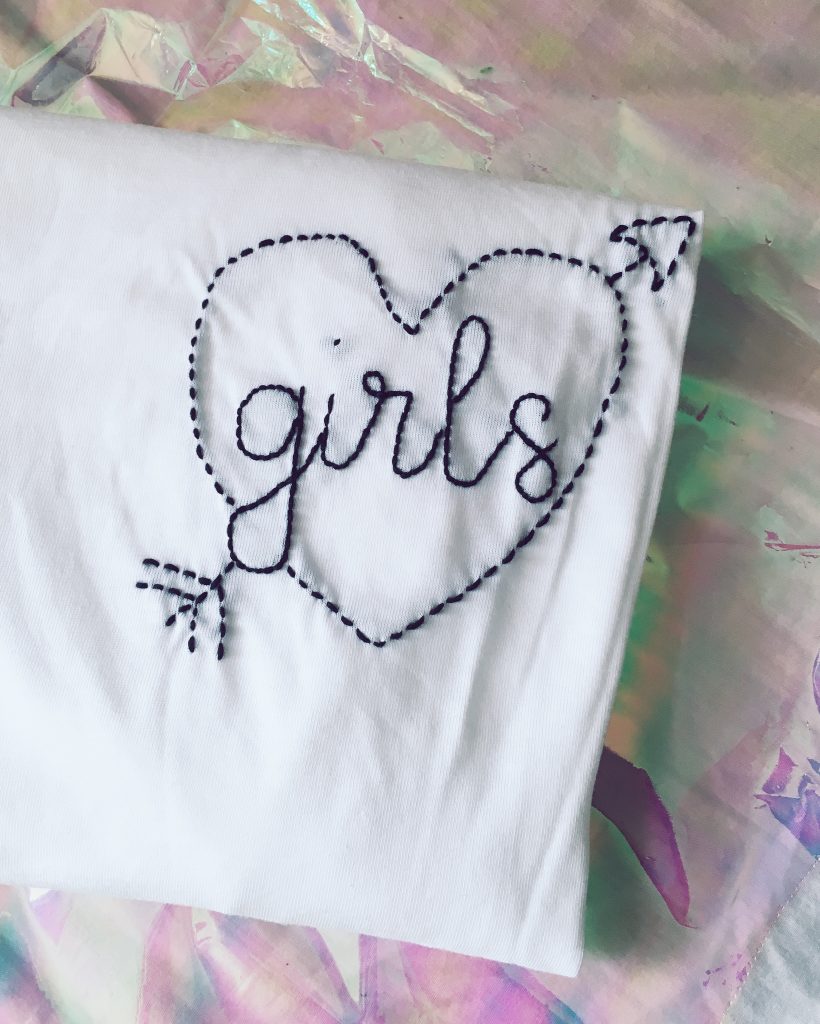
Do tattoos have to tell a story or have a meaning behind them? Not at all. I think that, for me anyway, it’s nice to be able to recount the stories behind them, but of course, sometimes the stories behind them are just the people you were with or the shop you were sat in or the laughs you had while getting it done. I don’t think that the art itself has to have a meaning – tattoos are a way to remember people and places and context, and I reckon that’s more important than trying to make them visually significant.
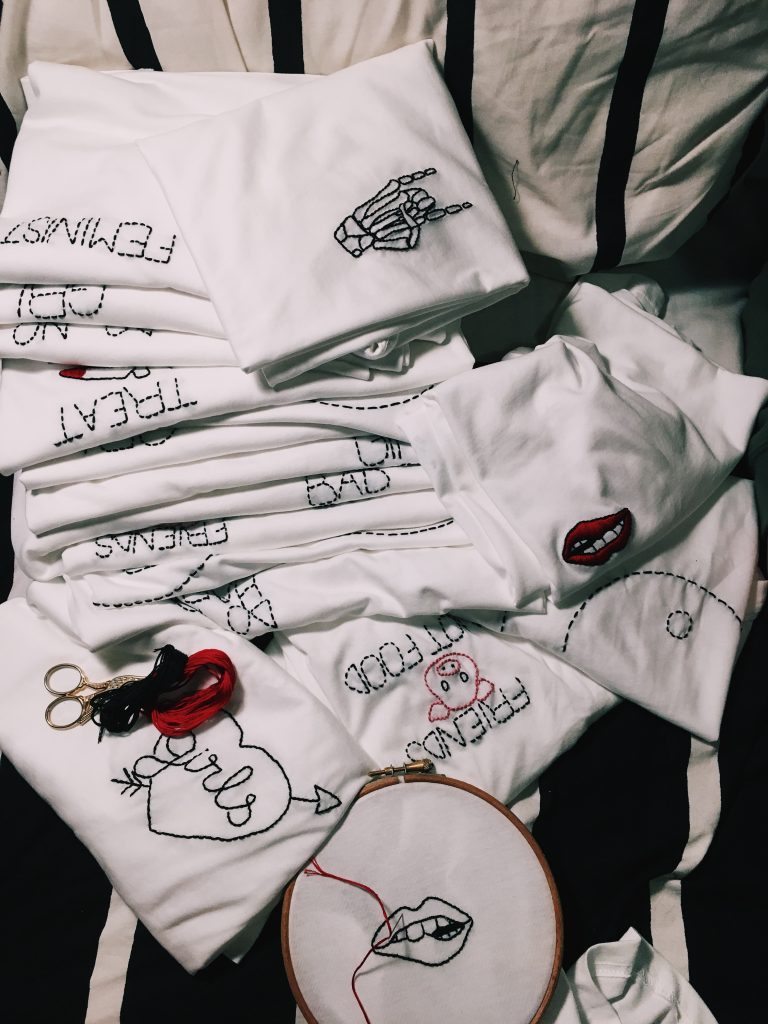
What plans do you have for GRLCLB in the future? I’m trying to make it less labour intensive for me on my own. Whether that means getting other people involved – or not – I’m not sure yet. I just feel like so much of my time is taken up with sewing that I can’t let the brand grow into something that can reach more people. I want to start engaging more with ‘real life’ people – the goal of it was to create a safe place for people, so how wonderful would it be if that could be translated into a physical one? I want to concentrate less on the actual physical act of stitching, and more on the ways that GRLCLB can really make a difference. This year will see the introduction of more printed products, still with the signature GRLCLB style/sass, but that will hopefully just mean the start of bigger and better things to come!